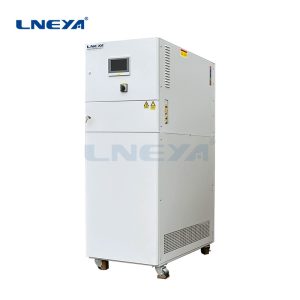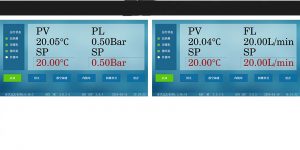Basic structure manual of industrial chiller
Industrial chillers are composed of compressors, condensers, evaporators, expansion valves and other accessories.
1. Compressor: In the industrial chiller system, the compressor is the power to ensure refrigeration. The compressor is used to increase the pressure of the refrigerant in the system, so that the refrigerant circulates in the refrigeration system to achieve the purpose of refrigeration.
2. Condenser: The high temperature and high pressure Freon of the refrigeration system enters the condenser after coming out of the compressor, releases a lot of heat to the cooling medium, and is then cooled and liquefied.
3. Evaporator: When the freon liquid in the refrigeration system enters the expansion valve for throttling and is sent to the evaporator, it belongs to the vaporization process. At this time, it needs to absorb a lot of heat, gradually reduce the valence and mass temperature, and achieve the effect of cooling.
4. Expansion valve: In the flow chart of the refrigerant system of the industrial chiller, we found that there is a small part between the condenser outlet and the evaporator inlet, which is called thermal expansion valve. It is a throttling and decompression component that reduces the condensing pressure of the refrigerant to the evaporating pressure. Therefore, its role in the refrigeration system is essential. It is connected with the refrigeration compressor, evaporator and condenser, also known as the four major components of the refrigeration system.
5. Other accessories: including drying filter and high and low pressure controller. The filter drier is not removable. The internal structure adopts molecular sieve structure, which can remove a small amount of impurities and moisture in the pipeline, thereby purifying the system. High and low pressure controllers play a protective role in the refrigeration system.
Related recommendations
-
Measures for stable operation of short-range molecular distiller
938If the short-range molecular distiller is inefficient during operation, it will affect the use of the associated refrigeration heating temperature control system. How does the short-range molecular distiller maintain stable operation? If the steam...
View details -
Heating and cooling circulator for X-ray diffraction system
883X-ray diffraction (XRD) systems are widely used in materials science, chemistry, physics and other fields to study the crystal structure of substances. In order to conduct experiments under different temperature conditions, a heating and c...
View details -
Won the “2021 High Quality Development Award”
1704On the afternoon of May 8, 2022, the 2020 Annual Summary and Commendation Conference was held in Hongshan Street, Wuxi City. Wuxi Guanya Constant Temperature Refrigeration Technology Co., Ltd. (LNEYA) won the "2020 Outstanding Contribution Award"...
View details -
Temperature control during new energy vehicle battery test
1192With the continuous implementation of energy saving and emission reduction policies, new energy power batteries are also continuously encouraged to develop, and liquid cooling systems have become an inevitable trend for new energy vehicles. The or...
View details
 LNEYA Industrial Chillers Manufacturer Supplier
LNEYA Industrial Chillers Manufacturer Supplier













